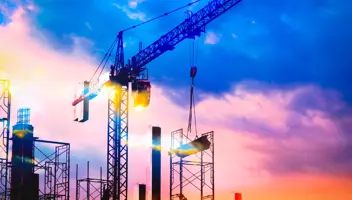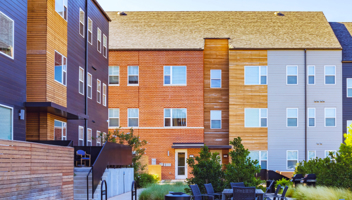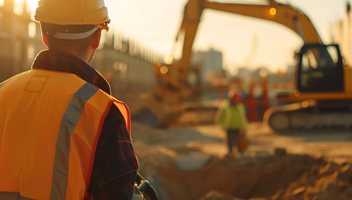The tragic events of Grenfell Tower on the night of 14 June 2017, continue to have significant and far-reaching implications for both the commercial and residential property markets.
As a practising Chartered Building Surveyor within Watts Group, I have seen the impact of Grenfell Tower on the professional services we provide to our clients; it has been seismic, and even as I write this, the guidance continues to shift constantly.
To add to these difficulties, the ability of property professionals to obtain professional indemnity insurance to serve in this area, is becoming increasingly challenging.
To best understand where we are today in respect of fire related building defects to both residential and commercial property, one should briefly reflect on the circumstances at Grenfell Tower.
Grenfell Tower
For those who have followed the two-phase Grenfell Tower Inquiry, it will be apparent that the failures encountered at Grenfell Tower are not confined simply to the cladding system, albeit that was the most significant issue to permit the passage of fire and flame around the building.
The following areas are just some of the deficiencies which were considered to have a contributory effect to the greatest loss of life in a building fire in the UK for over a century:
- Poorly fitted windows during 2016 refurbishment;
- Existing timber windows left in place during 2016 refurbishment;
- Ineffective fire doors;
- Poor internal fire escape signage;
- Lack of appropriate fire barriers within the cladding system;
- Lack of appropriate fire barriers around the windows;
- Firefighters unable to take control of passenger lift.
Cladding
The Phase 1 Report of the Grenfell Tower Inquiry of October 2019 records that, following an electrical fault in a fridge freezer of the kitchen of flat 16 which then spread out of the flat into the external cladding system, the main reason through which the flames were allowed to spread so quickly around the building was the presence of aluminium composite material (ACM) rainscreen panels with polyethylene cores. This acted as a significant source of fuel.
It was subsequently considered that the ACM cladding did not comply with the requirements of the Building Regulations, which triggered a widespread review of building regulations requirements both in Scotland and in the rest of the UK.
One significant result from this is that, in respect of new-build developments, the external cladding to any building over 18 metres in height in England and Wales, and over 11 metres in Scotland, must be non-combustible.
There has now been a much greater focus on non-combustible insulation systems such as mineral wool, and glass wool, rather than phenolic foams, PIR and PUR insulation boards, all of which are combustible.
Residential
Of significant importance for those who find themselves with a responsibility to manage residential properties, is the consolidated advice note ‘Advice for Building Owners of Multi-Storey, Multi-Occupied Residential Buildings’, published by the Ministry of Housing, Communities & Local Government (MHCLG).
This document provides a full analysis of the raft of significant issues which need to be addressed and managed in multi-occupied residential buildings, including high pressure laminates (HPLs), aluminium composite materials (ACMs), balconies, fire doors, and other areas of concern.
This is the principal document in respect of life safety, and it requires relevant buildings (multi-storey, multi-occupied) to be assessed as part of a fire risk assessment process.
Some of the results of these assessments have led to significant work being undertaken to mitigate fire risk, including the full replacement of cladding systems and/or installation of appropriate cavity fire barriers.
In some instances of particularly high risk, and until such times as this work has been completed, co-proprietors have found themselves having to fund for walking watchmen to walk round their residential block during the night in case of a fire developing.
On a separate, but related note, is the EWS1 form. This has been developed by the RICS to help facilitate transactional work so that a valuer can take the relevant issues into account.
When an RICS residential surveyor inspects flats within wider common blocks, they may raise concerns or unknowns raised in respect of the external wall systems, which would be of relevance to valuers and lenders.
In this event, it is likely that a residential surveyor is unable to apply a valuation against the subject property, until further information is gleaned as to the construction of the external walls.
In a bid to address this, and specifically for residential properties such as blocks of flats (including those owned by housing associations and social housing providers as well as privately owned), student accommodation, dormitories, assisted living, care homes and Houses in Multiple Occupation (HMOs), the RICS developed the EWS1 form.
This seeks to identify whether the external wall construction does include combustible materials, or if it is unlikely to do so.
It will also seek to identify whether remedial works are required to be undertaken. These forms are typically issued by Chartered (RICS) Building Surveyors or by Chartered Fire Engineers.
It should be noted that the identification of the cladding material is not the only consideration, and that the presence (or lack thereof) of cavity barriers within the construction of the external envelope, is also of vital consideration as part of the review.
Commercial
Within our practice across the UK for our clients, and to best allow for an understanding of whether the external wall construction of assets that our clients hold include materials that support combustion, we typically offer either a Phase 1 survey, or a Phase 2 survey.
A Phase 1 survey is a non-intrusive survey, and typically involves an assessment of all records and files associated with a building, together with a non-intrusive walk round survey of the subject property.
In many instances, a Phase 2 is subsequently commissioned, allowing for representative opening up works to be undertaken, to facilitate an assessment of the concealed construction, including cavity fire barriers, insulation types and cladding systems.
It has too often been our experience that the desktop information we have reviewed as part of a Phase 1 survey has proven to be inaccurate when opening up works have subsequently been undertaken, and a Phase 2 survey is almost always now recommended by us where there are any concerns as to construction form and materials.
Theory and Practice
The position in the UK continues to evolve. Even on 5th April 2021 there were further changes as to buildings that should or should not need an EWS1 form.
In addition, the problematic professional indemnity market to consult on these issues proves challenging, but as Grenfell Tower illustrated, these are challenges that need to be surmounted.
Michael Wright is an Associate and Chartered Building Surveyor within Watts Group, a firm of independent firm of Building Surveyors, Quantity Surveyors and Project Managers, regulated by the RICS. We regularly act for funds & investors offering due diligence services that encompass vendors surveys, purchaser inspections, re-financing and peer reviews on individual assets and large portfolios. As a business we work across all asset classes and deliver our services throughout the UK and Continental Europe.
Related News, Insights & Events

Performance security part three: Retentions
The most widely utilised form of performance security, being retentions and some recent measures introduced in the UK to encourage transparency in retention practices in the construction industry.

Building Safety Levy (Scotland) Bill introduced
Introduced on 5 June 2025, the Building Safety Levy (Scotland) Bill proposes a new tax which, if passed, will be known as the Scottish Building Safety Levy ("the Levy").

Performance security part two: Parent company guarantees
We are considering recent trends and what these mean in practice. Part 1 considered performance bonds; here we’ll focus on parent company guarantees (PCGs).





